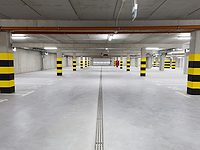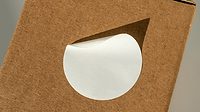Enhancing Color Performance with Novel Post-Add Solutions

Boosting color strength is on the forefront of coatings formulators’ and manufacturers’ minds. However, for many systems, improving color performance is a difficult task. Whether it is a ready-made dispersion or a fully formulated system, large adjustments to the formula can be unfeasible due to manufacturing, volatile organic compounds (VOCs) and consumer restraints. Borchers technology allows for post addition of an additive to improve color acceptance, color strength and quality of the pigmented system. A simple addition of a color booster or compatibilizer to the base will result in a stronger, cleaner and more chromatic color. Benefits are evident in tints with a variety of difficult pigments. An additional benefit is a reduction or elimination of color rub-out and improved compatibility of universal water-based systems used in solvent-based bases.
There are three key factors linked to the rise in challenges with today’s tinting systems. The first is universality of colorants, meaning a formulator is tasked with making a single dispersion line work across a wide range of technologies. A colorant system must perform identically in acrylics, solvent-based alkyds, vinyl acrylic esters, alkyd emulsions and many additional base chemistries. The second is an industry-wide move towards globalization. With chemists working on formulations across the globe, harmony is something coating companies are targeting. A formulator working in the United States is being asked to use the same tinting systems as a fellow formulator working for the same company in China. This means specialized colorants for each region are being replaced by global tinting systems. The third factor is the reduction or elimination of VOCs in coatings. By eliminating VOCs, universal tinting systems have become primarily water-based, leading to compatibility restraints, as VOCs are useful in compatibility with solventborne alkyd paints.
Creating universal colorants for many systems, globalizing colorants and removing VOCs from formulations individually are great challenges for formulators, but accomplishing all simultaneously creates a great deal of stress on the system. Often, universal colorants will show incompatibility in the form of color rub-outs, reduced tint strength or visible defects. These are serious symptoms many formulators face. A novel post-add additive line has been developed to overcome these challenges in the form of color boosters and compatibilizers; these solutions enhance color strength and color acceptance respectively.
Color Boost Additives
The color boost additive line was specifically designed to enhance the performance of universal tinting systems in like-to-like applications. For example, waterborne colorants going into waterborne paints and solventborne colorants going into solventborne paints (Figure 1). This can include both architectural and industrial applications. Depending on compatibility of the additive in different systems, one needs to screen for the best performance from the additives provided in Table 1.
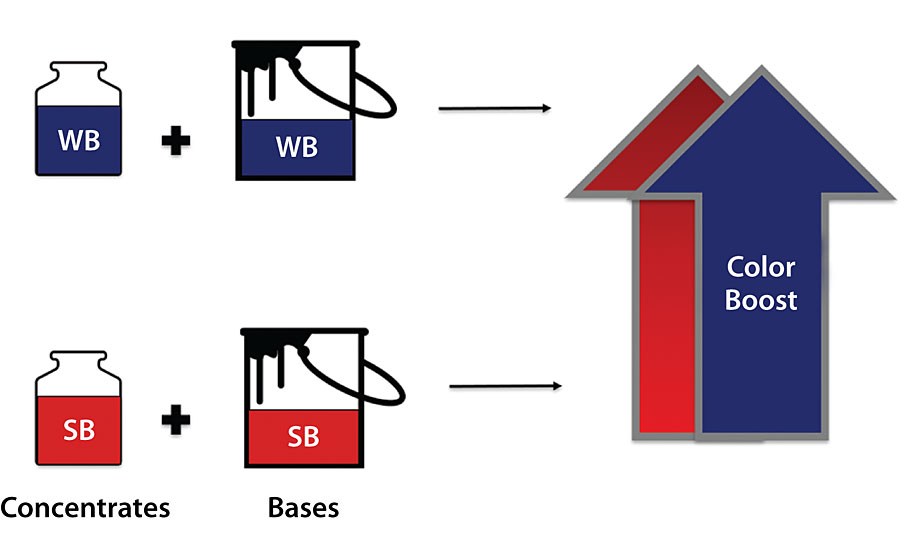
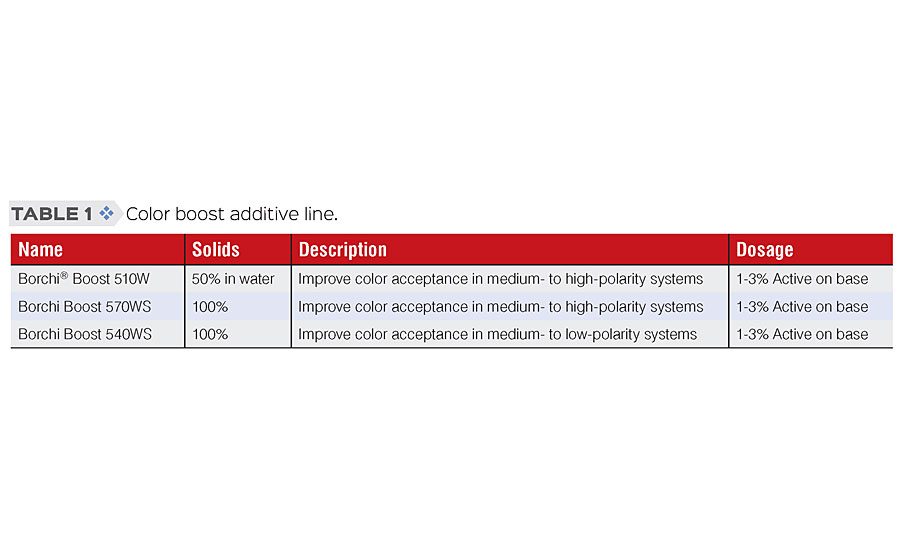
Compatibilizer Additives
Compatibilizers serve a different purpose than color boost additives. Their main function is to overcome compatibility limitations of VOC-free waterborne colorants used in low-VOC alkyd systems (Figure 2). This is most relevant to the DIY market where alkyd-based paints have been reducing VOC levels. Table 2 shows the different compatibilizers available.

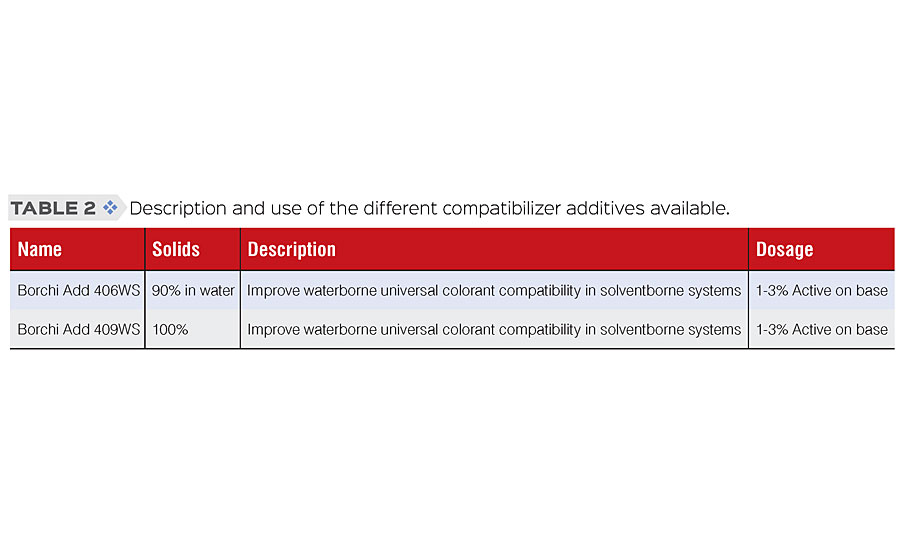
Factors That Led to Severe Incompatibility of Zero-VOC Colorants with Low-VOC Alkyd Paints
Long-oil alkyd manufacturers are being forced to reduce VOC content in their resins, coming primarily from mineral spirits. Traditional formulations contained up to 50% VOCs, and the market has tasked many manufacturers to reduce the amount of VOCs to less than 10%. This has been accomplished in two distinct ways:
- Increased resin solids;
- Partial substitution of mineral spirits with water.
This formulation change has led to a saturation level of water content in the alkyd base where any additional water coming from the waterborne colorants is no longer accepted by the system. Paint producers have had limitations and little influence on the quality and performance of ready-made colorant lines. Adding Borchi ® Add compatibilizers into such high-solids, low-VOC alkyd bases allows increased formulation flexibility and enables higher water acceptance levels. These novel post-add additives are easy to test and simple to incorporate into the base paint. Such solutions have empowered formulators to directly address problems and eliminate incompatibility without modifying the colorant system.
Testing Approach
Additive Screening
An initial screening of all the products from the color boost or compatibilizer line, in the system of concern, is performed at 1% dosage by weight on base paint (Figure 3). A drawdown is made of all the formulations and the following evaluations are conducted to determine the degree of improvement the post-addition additive brings to the paint formulation:
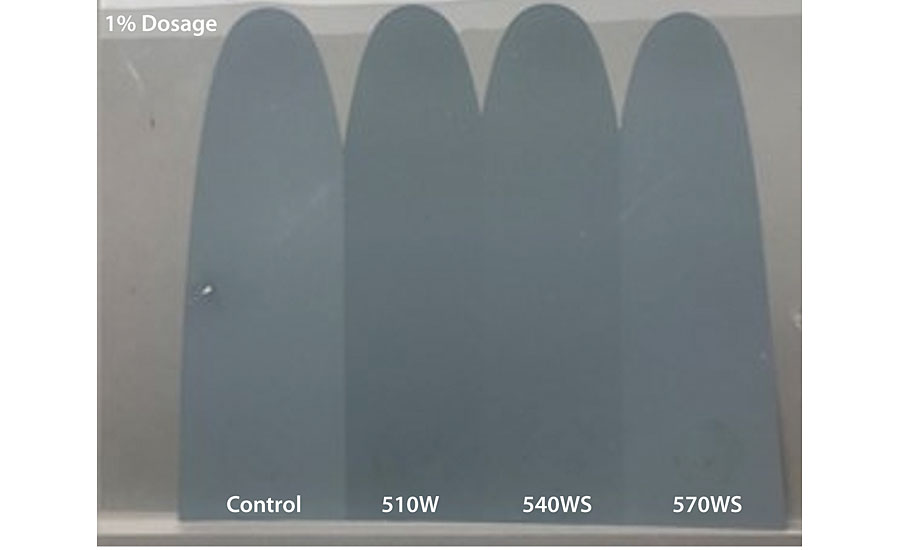
- In-can color uniformity
-
Drawdown test
- Rub-out
- Gloss
- Surface appearance (pin-holes or flow and leveling)
- Color strength
- Chromaticity
Dosage Optimization
Once the correct additive that brings the best performance to the paint system is selected, the following tests should be -completed:
- Ladder study of the selected additive at different dosages: 1, 2 and 3%;
- Repeat observations as above.
The best-performing formula will have the lowest rubout, best appearance and color vibrancy.
Case Study: Boosting Phthalo Blue
A study was performed using a commercially available waterborne exterior flat architectural coating. When adding 5% phthalocyanine blue dispersion, the color strength was less than desired for this application. Borchi Boost additives were screened in order to provide increased chromaticity to the coating. All three products were tested at 1% additive on total base weight. In this system, Borchi Boost 510 provided the greatest increase in color compared to the control without Boost additives (Figure 4). No rubout was observed in all samples.
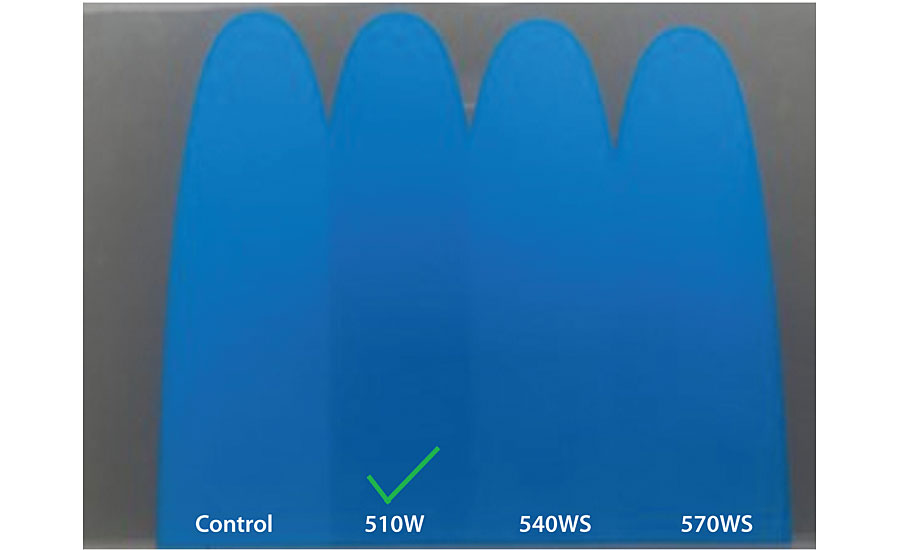
Case Study: Improving Compatibility of Waterborne Red Iron Oxide Colorant in Solventborne Alkyd
Adding a water-based red iron oxide colorant into a white solvent-based alkyd resulted in severe incompatibility. The type of alkyd used was high solid, low-VOC long oil. When adding 1% of Borchi Add 409WS, the rubout was eliminated (Figure 5).
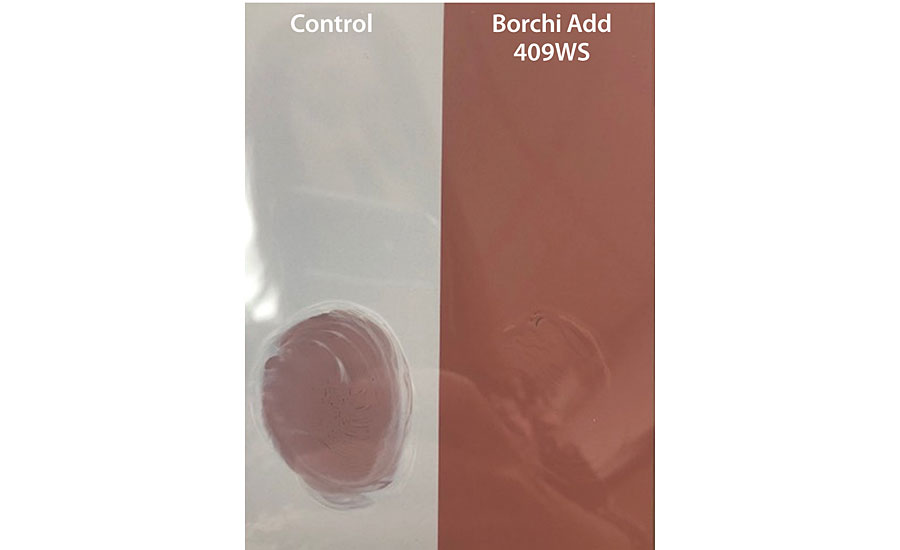
Conclusion
Borchi Add and Borchi Boost are post-addition additives designed to improve color performance and reduce or eliminate incompatibility, allowing paint formulators to overcome most of the challenges associated with VOC-free universal tinting systems. These additives provide high value to a paint formulation and easy product handling through post addition. All products are VOC free and improve color performance or compatibility of colorants into various paint systems.
Looking for a reprint of this article?
From high-res PDFs to custom plaques, order your copy today!





